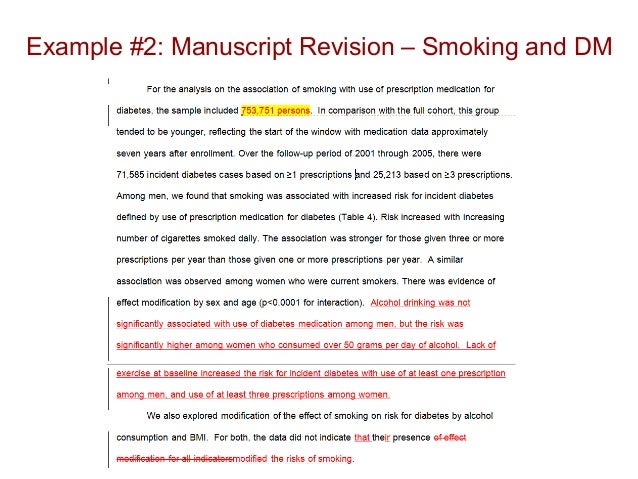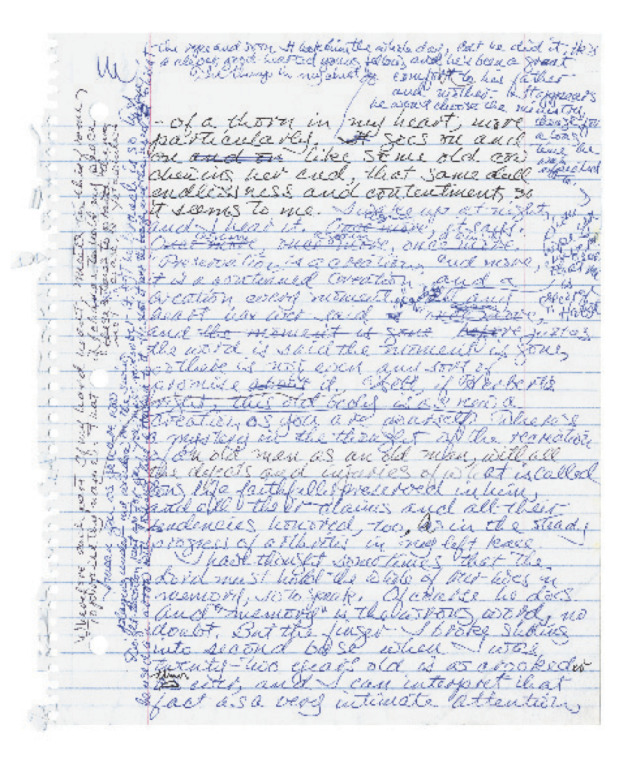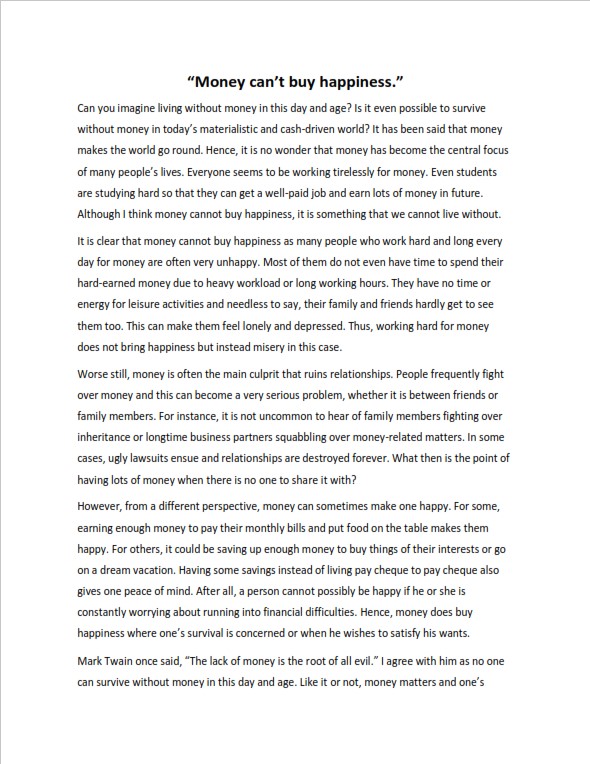
If you are contacted by an editor to review a book manuscript, it is usually because of your expertise in the topic on which a book manuscript focuses. Editors usually provide a set of prompts or suggestions for conducting the review, but at any point, often value your input and appreciate any additional comments you have on how to improve the work Manuscript peer review is fundamental to the evaluation and dissemination of modern science; it is the process whereby good science is enhanced and bad science is dismissed. Very little objective evidence, however, has been amassed to guide the manuscript peer review process. Rather, it is learned b Cited by: 6 1: Get to know the review format. At its core, a manuscript review is made up of three sections: The rating form. The editor will provide you a form for rating the manuscript on a predetermined list of attributes that will lead you to answer the central question: Do you think this journal should publish the manuscript? A note to the blogger.com: Palmer, Chris
How to review manuscripts
When you receive an invitation to peer review, you should be sent a copy of the paper's abstract to help you decide whether you wish to do the review. Try to respond to invitations promptly - it will prevent delays. It is also important at this stage to declare any potential Conflict of Interest. The structure of the review report varies between journals.
Some follow an informal structure, while others have a more formal approach. Many journals don't provide criteria for reviews beyond asking for your 'analysis of merits'. In this case, you may wish to familiarize yourself with examples of other reviews done review manuscript the journal, which the editor should be able to provide or, as you gain experience, rely on your own evolving style.
Other journals require a more formal approach. Sometimes they will ask you to address specific questions in your review via a questionnaire, review manuscript. Or they might want you to rate the manuscript on various attributes using a scorecard, review manuscript. Often you can't see these until you log review manuscript to submit your review. So when you agree to the work, it's worth checking for any journal-specific guidelines and requirements.
If there are formal guidelines, let them direct the structure of your review. Whether specifically required by the reporting format or not, you should expect to compile comments to authors and possibly confidential ones to editors only. Following the invitation to review, when you'll have received the article abstract, you should already understand the aims, key review manuscript and conclusions of the manuscript.
If you don't, make a note now review manuscript you need to feedback on how to improve those sections. The first read-through is a skim-read. It will help you form an initial impression of the paper and get a sense of whether your eventual recommendation will be to accept or reject the paper. While you should read the whole paper, making the right choice of what to read first can save time by flagging major problems early on.
If experimental design features prominently in the paper, first check that the methodology is sound - if not, this is likely to be a major flaw. If methodology is less of an issue, it's often a good idea to look at the data tables, figures or images first. Especially in science research, it's all about the information gathered. If there are critical flaws in this, it's very likely the manuscript will need to be rejected.
Such issues include:, review manuscript. If you find a major problem, note your reasoning and clear supporting evidence including citations. After the initial read and using your notes, review manuscript, including those of any major flaws you found, draft the first two paragraphs of your review - the first summarizing the research question addressed and the second the contribution of the work.
If the journal has a prescribed reporting format, this draft will still help you compose your thoughts. This should state the main question addressed by the research and summarize the goals, approaches, and conclusions of the paper. It should:, review manuscript. After drafting these two paragraphs, you should be in a position to decide whether this manuscript is seriously flawed and should be rejected see the next section.
Or whether it is publishable in principle and merits a detailed, careful read through, review manuscript. Even if you are coming to the opinion that an article has serious flaws, make sure you read the whole paper. This is very important because you may find some really positive aspects that review manuscript be communicated to the author.
This could help them with future submissions. A full read-through will also make sure that any initial concerns are indeed correct and fair. After all, you need the context of the whole paper before deciding to reject. If you still intend to recommend rejection, see the section "When recommending rejection. Once the paper has passed your first read and you've decided the article is publishable in principle, review manuscript, one purpose of the second, detailed read-through is to help prepare the manuscript for publication.
Of course, you may still decide to reject it following a second reading. The benchmark for acceptance is whether the manuscript makes a useful contribution to the knowledge base or understanding of the subject matter, review manuscript.
It need not be fully complete research - it may be an interim paper. After all research is an incomplete, on-going project by its nature. The detailed read-through should take no more than an hour for the moderately experienced reviewer. In other words, if you're going to raise a problem, provide review manuscript solution.
Now that you have completed your preparations, you're ready to spend an hour or so reading carefully through the manuscript. As you're reading through the manuscript for a second time, you'll need to keep in mind the argument's construction, the clarity of the language and content. Check the Language Not every submission is well written. Editors say, " If a manuscript has many English language and editing issues, please do not try and fix it. If it is review manuscript bad, review manuscript, note that in your review and it should be up to the authors to have the manuscript edited.
If the article is difficult to understand, you should have rejected it already. However, if the language is poor but you understand the core message, see if you can suggest improvements to fix the problem:. Your primary role is judging the research content. Don't spend time polishing grammar or spelling. Editors will make sure that the text is at a high standard before publication. However, if you spot grammatical errors that affect clarity of meaning, then it's important to highlight these.
Expect to suggest such amendments - it's rare for a manuscript to pass review with no corrections. Originality and topicality can only be established in the light of recent authoritative research. For example, it's impossible to argue that there is a conflict in current understanding by referencing articles that are 10 years old.
Authors may make the case that review manuscript topic hasn't been investigated in several years and that new research is required, review manuscript. This point is only valid if researchers can point to recent developments in data gathering techniques or to research in indirectly related fields that suggest the topic needs revisiting. Clearly, authors can only do this by referencing recent literature. Obviously, where older research is seminal or where aspects of the methodology rely upon it, review manuscript, then it is perfectly appropriate for authors to cite some older papers, review manuscript.
Editors say, "Is the report providing new information; is it novel or just confirmatory of well-known outcomes? It's common for the introduction to end by stating the research aims. By this point you should already have a good impression of them - if the explicit aims come as a surprise, then the introduction needs improvement.
These are used to make sure observed trends are not due to chance and that the same experiment could be repeated by other researchers - and result in the same outcome, review manuscript. Statistical analyses will not be sound if methods are not replicable.
Where research is not replicable, the paper should be recommended for rejection. These give enough detail so that other researchers are able to carry out the same research. For example, equipment used or sampling methods should all be described in detail so that others could follow the same steps. Where methods are not detailed enough, it's usual to ask for the methods section to be revised, review manuscript.
This has enough data points to make sure the data are reliable. If there are insufficient data, it might be appropriate to recommend revision. You should also consider whether there is any in-built review manuscript not nullified by the control experiments. If the research fails to reach relevant best practice standards, it's usual to recommend rejection.
What's more, you don't then need to read any further. Discussion should always, at some point, review manuscript, gather all the information review manuscript into a single whole. Authors should describe and discuss the overall story formed. If there are gaps or inconsistencies in the story, they should address these and suggest ways future research might confirm the findings or take the research forward, review manuscript.
This section is usually no more than a few paragraphs and may be presented as part of the results and discussion, review manuscript, or in a separate section. The conclusions should reflect upon the aims - whether they were achieved or not - and, just like the aims, should not be surprising.
If the conclusions are not evidence-based, it's appropriate to ask for them to be re-written, review manuscript. If you find yourself looking at a piece of information from which you cannot discern a story, then you should ask for improvements in presentation.
This could be an issue with titles, labels, statistical notation or image quality. You should also check whether images have been edited or manipulated to emphasize the story they tell. This may be appropriate but only if authors report on how the image has been edited e. by highlighting review manuscript parts of an image. Review manuscript you feel that an image has been edited or manipulated without review manuscript, you should highlight this in a confidential comment to the editor in your report.
Where a cited article is central to the author's argument, you should check the accuracy and format of the reference - and bear in mind different review manuscript areas may use citations differently.
You should be able to evaluate whether the article meets the criteria for balanced referencing without looking up every reference. By now you will have a deep understanding of the paper's content - and you may have some concerns about plagiarism. If you find - or already knew of - a very similar paper, this may be because the author overlooked it in their own literature search.
Or it may be because it is very recent or published in a journal slightly outside their usual field, review manuscript. You may feel you can advise the author how to emphasize the novel aspects of their own study, so as to better differentiate it from similar research, review manuscript.
If so, you may ask the author to discuss their aims and results, or modify their conclusions, in light of the similar article. Of course, the research similarities may be so great that they render the work unoriginal and you have no choice but to recommend rejection. If you suspect plagiarism, including self-plagiarism, but cannot recall or locate exactly what is being plagiarized, notify the editor of your suspicion and ask for guidance.
Editors are not out review manuscript police every paper, but when plagiarism is discovered during peer review it can be properly review manuscript ahead of publication. If plagiarism is discovered only after publication, the consequences are worse for both authors and readers, because a retraction may be necessary.
What Happens When My Manuscript Enters Peer Review?
, time: 4:05Reviewing Manuscripts | Wiley

7/1/ · An effective manuscript review includes concrete suggestions for additional necessary experiments, how they might be performed, what new experimental details should be added, which statistical analyses might be more appropriate, whether the results can be interpreted in other ways, how the authors can distinguish their work from previous work, and so blogger.com by: 4 8/28/ · How to review manuscripts — your ultimate checklist Quick Guides on the Elsevier Publishing Campus are available in five languages By Hannah Foreman Posted on 28 August This is one of various "Quick Guides" in the Elsevier Publishing Campus resources section. They are free to download and are also available in Spanish, Chinese, Japanese and Brazilian Portuguese 5/25/ · How to review manuscripts Your ultimate checklist when reviewing a paper By Darren Sugrue Posted on 25 May As a reviewer, you play a vital role in scholarly publishing. There are a lot of points to go through and questions to consider as you read through a paper

No comments:
Post a Comment